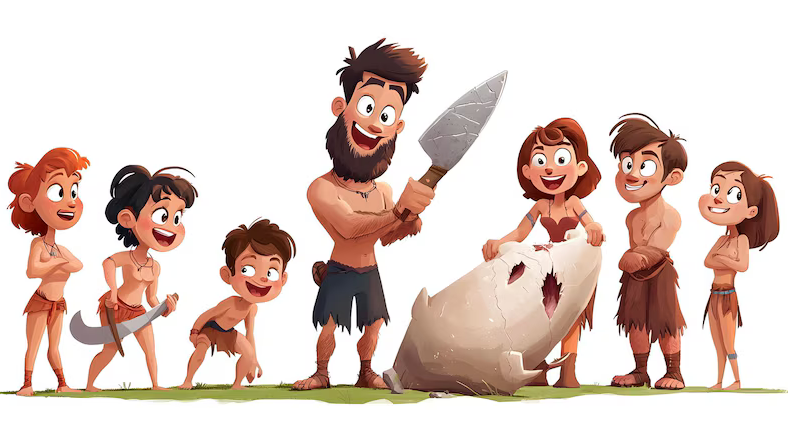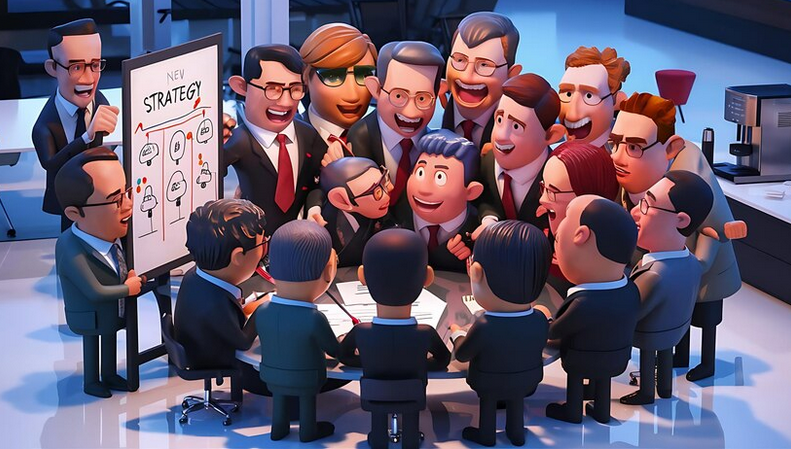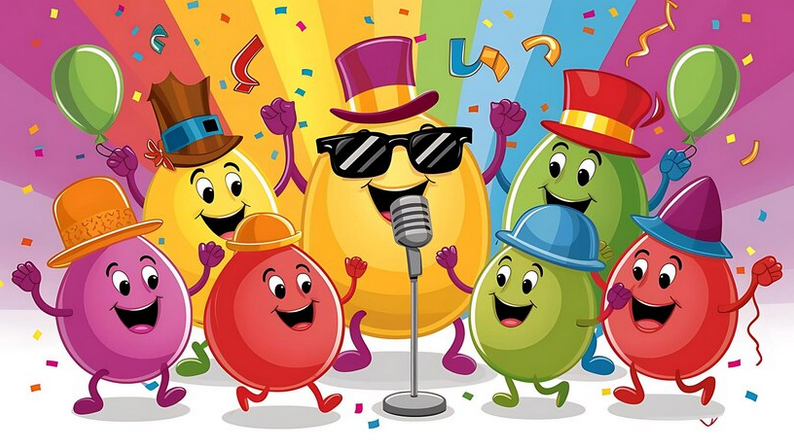When I first encountered brand cannibalization, I became scared - because it means destroying myself. In this article, we will understand how such a tragic process affects business, and I will share with you practical tips that will help you avoid losses. Read on to understand how to keep your brand unique and profitable.

Glossary
🌟 Brand cannibalization is a process in which One of the company's products or services begins to "eat up" the sales of another of its products, which leads to a decrease in overall profitability.
📊 Cannibalization rate is a measure used to estimating the share of sales of one product lost in favor of another within the same company.
🔍 Negative unplanned cannibalization - the case when a new product or service reduces sales of an existing product without prior planning or awareness of this effect.
🎯 Positive planned cannibalization is a situation where a company deliberately introduces a new product that replaces or complements an existing one in order to improve its overall market position or develop a new niche.
🏷️ Brand - a unique name, symbol or a design that identifies a product or service and differentiates it from competitors.
💡 Branding strategy - an action plan aimed to create, develop and maintain a unique brand image.
📈 Positioning is the process of determining the location that a product or brand ranks in the minds of consumers relative to competitors.
🛠️ Market analysis - research that helps Understand the market dynamics, consumer preferences and competitive environment in which cannibalization may occur.
🧩 Niche - a specific market segment, on which, as a rule, targets a narrower group of consumers.
📆 Product life cycle is a concept that describes the stages through which a product passes from its development to its withdrawal from sale, which can influence cannibalization.
Those who realized brand cannibalization: what it is and why important
Brand cannibalization is not just a marketing concept, but a real threat to business. It occurs when two products from the same company compete with each other for the same audience. It's like suicide in the market, when the growth of one product occurs at the expense of the loss of another. But how did I encounter this phenomenon myself?

I remember a few years ago my team was working on launching a new product. Inspired by the success of our flagship product, we decided to create a "closest competitor," with the idea that this would help attract new audiences. However, in the end we became our own “enemies” - sales of both products began to decline rapidly. It became obvious that they were “eating” each other’s audience and uncertainty was growing among buyers: why buy a similar product if there is one that they already know and love?
“Brands must compete externally, not internally,” said our marketing expert, and his words took me by surprise. Having two products with identical positioning in my work, I did not realize how much their intersection hit our profits. As a result, we conducted a large-scale analysis that showed that not only new customers, but also our long-time customers were switching to a cheaper version of our product.
So grab a notepad, because the following takeaways will be useful for anyone who wants to avoid this trap:
- Evaluate your positioning. Understanding the differences between brands is already half the battle.
- Research your target audience. Why create a new product if it does not bring anything fundamentally new to customers?
- Conduct testing. Sometimes it turns out that customers are not aware of which product is best for them.
Therefore, if you find yourself in a similar situation, know that you can and should avoid cannibalization. Each of your products deserves its own, clearly defined space in the market. It is important to know who your consumer is and what exactly he is looking for, so as not to risk losing customers due to his own carelessness.
Examples of cannibalization in action
| Example | Description |
|---|---|
| Product A and Product B | Launch of a new product with similar properties leads to a drop in sales of old products. |
| Competing products | Saved on advertising, but this led to misunderstanding among customers and loss of profits. |
Reasons for brand cannibalization
The reasons why cannibalization occurs can be listed for a long time. Your main goal is to clearly understand what exactly is causing you to lose market share. For example, I have witnessed one brand's confusing positioning lead to spikes in customer interest. The new product line appealed to the same target audience as the old one.

At first, when we launched a cheaper alternative, we thought it would attract new clients. However, this decision led to the loss of sales of the old line. As soon as the consumer realized that there were no significant differences between the products, he began to switch to a new, more affordable option.
According to statistics, the most common reasons are:
- Incorrect positioning found among products.
- Lack of unique features: The two products looked almost identical.
- Poor advertising strategy that distracts attention from the old product.
The decisive moment was the fact that the entire team did not try to develop and improve the work of the old product, relying on the new one and ignoring the needs of existing customers. It was felt that as one line grew, its twin suffered.
Examples and solutions
| Reason | Example | Solution |
|---|---|---|
| Incorrect positioning | Products A and B for the same audience | Conduct in-depth market research |
| Lack of uniqueness | Copy a successful product without changes | Position each brand uniquely |
| Unsuccessful advertising | Focus on new product, ignoring old | Coordination marketing strategies |
Negative unplanned cannibalization
Cannibalization can have negative consequences even if it was caused by an error in strategy. For example, I witnessed increased competition in one of the markets, where several products from one company began to compete for the same audience. Once, having launched a new product, its success turned into a decrease in the profits of the old models.

Customers quickly get lost in discounts and special offers, which leads to a drop in awareness of cost and value of the old product. If I remember the moment when I myself took part in an exhibition where both products were presented under one roof, all visitors were looking for an analogy. But even we, knowing that we offered different lines, understood that people were confusing the products.
There were several factors that influenced the balance of sales:
- Market oversaturation and competition between products at different levels.
- Increased costs for advertising campaigns and general expenses.
- Loss of interest from customers who do not understand the difference between products.
So what can you do to avoid one of the most common mistakes?
Steps to solve the problem
| Step | Example/Method |
|---|---|
| In-depth analysis | Conduct user behavior research |
| Product redesign | Change the look and packaging of the old brand |
| Specification of the target audience | Decide who will be the buyer of the new product |
Positive planned cannibalization
If cannibalization can be negative, how do you deal with it positive aspects? I once observed how a well-planned launch of a new product under an old brand, while an existing product was still supported, could lead to unexpected success.

Methods used to achieve a solution to the problem can be not only loyalty programs, but and using customer feedback, which is just as important. Yes, it is easier to attract a new client, but keeping the old one in the face of growing constant competition is no less important!
When Procter Gamble launched its line of new detergents, the old branding began to lose some of its clientele. Synthetic products began to be presented as more effective, and it became a real art to highlight one's old product well.
If I were offered to participate in such a targeted campaign, I would say that this is absolutely the right way. Creating a new offer without losing loyal customers is a success!
Examples of successful campaigns
| Campaign | Description |
|---|---|
| Coca-Cola and Coke Zero | Support and marketing of both lines after the release of the new |
| Procter Gamble - Tide | Launch of a new product in the opposite niche |
Cannibalization rate
The consequences of a successful launch can often be seen through numbers, and here it is important to know how to measure the cannibalization coefficient. When we carried out calculations after the release of the new product, we came to the conclusion that the losses of the existing line reached significant levels.

The formula is simple:
Cannibalization Rate = Lost Sales of Existing Product / Sales of New Product
Using our data, we identified how new sales have a significant impact on old ones. What struck me was how the old product was the main source of profit in the first quarter, while the new product was just a "enticement" for new customers.
For example, if in the first quarter sales of the old product were 100,000 euros and the new product was 60,000, the cannibalization coefficient would be 0.33.
Analysis results
| State | Value | Comment |
|---|---|---|
| Sales of old | 100,000 euros | Loss of 20% |
| New sales | 60,000 euros | The bulk of clients return |
| Cannibalization coefficient | 0.33 | Suitable numbers |
Frequently asked questions on topic: Brand cannibalization
What is brand cannibalization?
How does brand cannibalization affect business?
What causes brand cannibalism?
What is negative unplanned cannibalization?
What is positive planned cannibalization?
How to calculate the cannibalization coefficient?
What steps can you take to avoid brand cannibalization?
Is there a connection between cannibalization and branding?
Can cannibalization be good for a brand?
How does cannibalization affect consumer behavior?
Thank you for reading and for becoming more enlightened! 🌟
Cannibalization of brand is not just a trend, but a key concept that many businesses face. You are now armed with the knowledge to recognize this process and prevent its negative consequences. As an independent expert, I have seen how skillful management of a portfolio of products has saved companies from losses and helped them in grow. You now know how to protect your brand and use what you've learned to grow sustainably. 💪
Let me know in the comments what you think about it!
.gif)
Article Target
Educate about the risks of brand cannibalization and offer solutions.
Target audience
Marketers, business owners, branding specialists.
Hashtags
Save a link to this article
Larisa Shishkova
Copywriter ElbuzIn the world of automation, I am a translator of ideas into the language of effective business. Here, every dot is a code for success, and every comma is an inspiration for Internet prosperity!
Discussion of the topic – Brand cannibalization
Informing about what brand cannibalization is and how it affects business.
Latest comments
13 comments
Write a comment
Your email address will not be published. Required fields are checked *





















.png)


Лариса Шишкова
Brand cannibalization is a serious issue that is often overlooked. It influences perceptions and market positions. What are your thoughts on how to avoid this?
Oliver Martin
Larisa, you are absolutely right! Our company has already experienced this firsthand when they launched a new product that actually “ate” the sales of the old one. How can you minimize the risk?
Sofia Keller
A very recent example: our competitor launched a new format, and their revenues fell. I think it is important to clearly differentiate the audience and understand how the products differ! 🙌
Hans Müller
Cannibalization is a pressing problem! In my opinion, the same company should do market research before introducing new products. How can PR be used to minimize the impact?
Anna Rossi
What about cross-promotions? You can create mutually beneficial promotions that will increase interest in both products. It seems simple, but it works! ✨
Pawel Nowak
I agree, Anna. Cross promotions can really help. You need to look for combinations that enhance both products, and do not devour each other.
Mariana Fernandez
I fully support it! We had a case where we tried to combine two product lines into one campaign. This gave incredible results! Do you think it’s worth doing such collaborations more often? 🤔
Marek Wojciechowski
You know, I sometimes find that too much noise around these changes is just distracting. Old habits die hard. Maybe it's better to leave everything as it is?
Лариса Шишкова
Mark, I see your point. But in the conditions of the modern market, changes cannot be avoided. Sometimes you have to take risks to grow. How can you find balance?
Oliver Martin
I believe that you need to be ready to experiment! Without them there will be no progress. The main thing is to learn from your mistakes and adapt to the market! 🚀
Sofia Keller
Yes, exactly! A smart approach to testing can help avoid cannibalization. Why take risks when you can test different strategies in advance?
Hans Müller
But I wouldn't rush. Sometimes it’s better to just leave something good that’s done afloat. It's not always worth following new trends.
Mariana Fernandez
But you know, Hans, you won’t achieve anything without changes. We cannot perceive business as a static body. Something has to change to remain relevant.